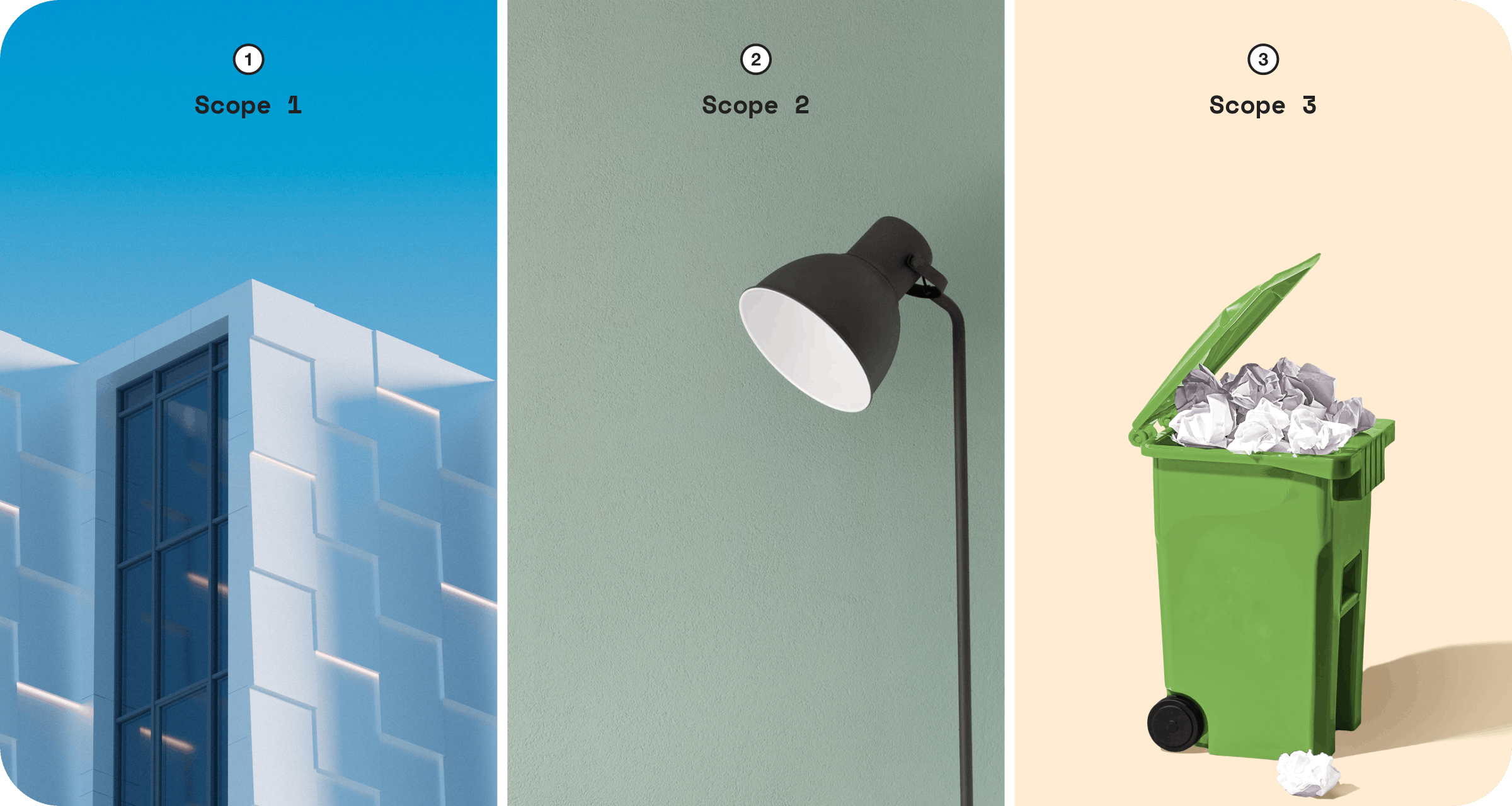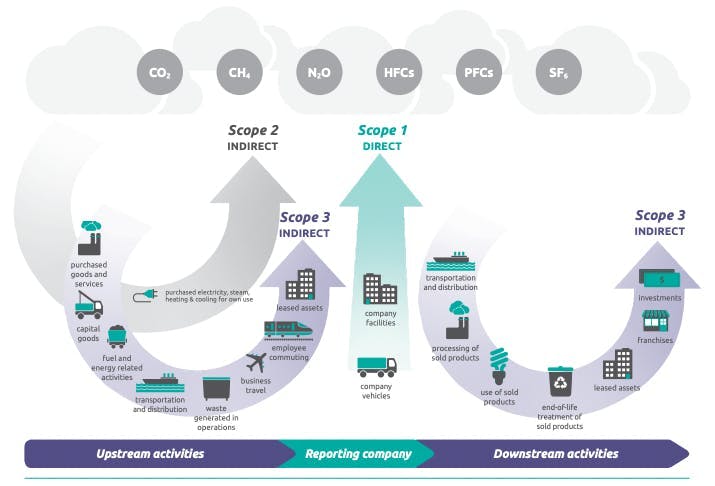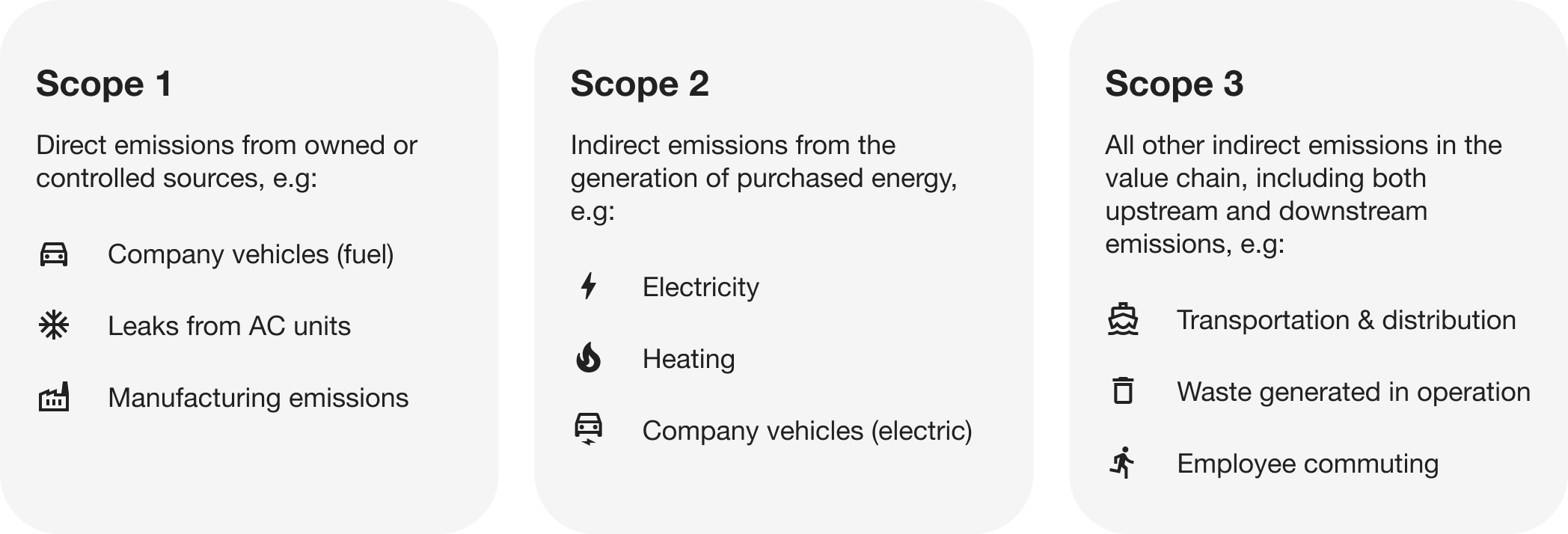

Scope 1, 2, and 3 emissions – it’s a phrase often used in relation to businesses measuring their carbon footprints. But what do these categories of emissions actually refer to??
Back in 2001 the Greenhouse Gas Protocol released a standardised framework for businesses to measure their emissions, in which they split emissions into 3 ‘scopes’, as the below diagram depicts:

Scope 1
Scope 1 emissions are direct emissions as a result of business activities i.e. from sources owned or controlled by the business itself.
That includes:
- Stationary combustion: emissions from fuels (oil or natural gas) used in business activities e.g. gas boiler used for heating company-owned buildings or in manufacturing.
- Mobile combustion: emissions from burning fuel to power company-owned vehicles e.g. delivery vans.
- Fugitive emissions: leaks or unintended emissions e.g. leaks from a faulty air conditioning unit.
- Process emissions: released during industrial processes e.g. fumes from a factory, CO2 released in cement production etc.
Scope 2
Scope 2 are indirect emissions released from the energy purchased by a business – electricity, steam, heat or cooling.
For most businesses, scope 2 emissions will be exclusively the electricity they purchase from a utilities company – used to heat the company's buildings, be it offices, manufacturing sites, warehouses, retail spaces or other.
Subscribe for the latest insights into driving climate positivity
Scope 3
Scope 3 encompasses all other indirect emissions that occur in the value chain of a company, but aren’t included in scope 2. Scope 3 emissions are almost always by far the largest portion of a company’s emissions, but are much more complicated to measure and tackle as they aren’t owned or controlled by the company directly.
Scope 3 emissions includes both:
Upstream emissions
These are any activities during production – from your suppliers. That includes:
- The goods and services you purchase to produce your end product or service e.g. raw materials, packaging, cloud computing services (take a look at how we reduced emissions at Lune by switching from Intel to ARM AWS)
- Transportation e.g. between your suppliers, or from suppliers to your manufacturing plant or warehouse
- Transporting materials and goods
- Employee commuting to/from the place of work
- Business travel.
Downstream emissions
These are activities after production – the distribution channels for your product or service. That includes:
- Transportation to the end customer i.e. any logistics services you use
- The lifetime end use of the product or service e.g. the emissions from energy needed by the customer to use your product
So, to summarise the difference between scope 1, 2 and 3 emissions:

Should you include scope 3 in your company calculations? 🧮
A big question is whether companies should be including scope 3 emissions when they measure their carbon footprint.
Scope 3 emissions represent the vast majority of a company’s carbon footprint across the value chain, so it’s important that they’re included in business emissions calculations, to get a real representation of environmental impact.
Lots of businesses ignore their scope 3 emissions, often because they’re a lot more complex than scope 1 and 2.
But there’s opportunity in the complexity.
To address scope 3 emissions means looking beyond your own immediate activities as a business and collaborating on solutions with your suppliers and peers – which means increased potential for positive impact.
Scope 3 emissions are also vital to the true definition of net zero – so if your business has goals to reach net zero emissions, you need to be including how to address and minimise scope 3 emissions in your company's net zero journey.
For advice on how to approach scope 3 emissions, take a look at the guidance from the Greenhouse Gas Protocol.
Readers also liked
Readers also liked

Subscribe for emissions intelligence insights
Get the latest updates in the world of carbon tracking, accounting, reporting, and offsetting direct to your inbox.


